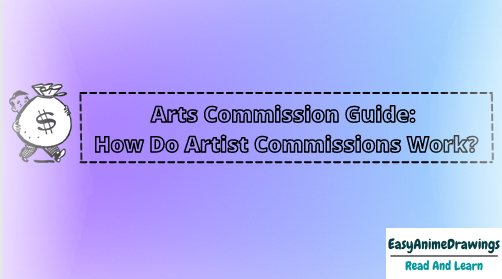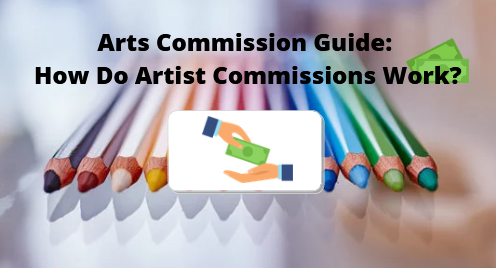Contents [show]
Arts Commission Guide: How Do Artist Commissions Work?

Arts Commission Guide – Posting is the process of hiring an artist to create a work of art based on client requests. There are many reasons why people use works of art. Sometimes, the piece they like is too big or too expensive. If so, the client may request a smaller or more affordable piece.
Sometimes, a client needs a work of art with a different colour than the real one. Interior designers may submit to a design similar to the colour scheme of their project, while corporate clients may want to “mark” the piece with corporate colours to match their appearance. Whatever the reason, commissions are widespread in the art world, and many artists will be pleased to create a piece according to the client’s wishes.
We know that posting art can be intimidating, especially for a first-time buyer. We created this blog post that quickly explains the whole process.
Where to Start?
When releasing a work of art, you should first decide whether you want a piece of art based on another artwork or a completely different piece. For example, some clients who want a piece can afford it and will ask for the same image but in a different size. Most artists will be happy to redo the work of art, even if the exact copy is not possible due to strategy or style. Sometimes, people want a personal piece of art to them, for example, a photo of them, a family member, a place, or something that contains a personal description.
If you are unsure about what you want, consult a gallery or artist to decide what kind of art suits your needs. The gallery will show you a portfolio of artists available for use and help clarify ideas. Once you have selected the artist and the title, you will be asked to sign a written contract. Having a written contract containing the details of the commission is essential to ensure that everyone adheres to their part of the agreement.
What Are the Properties of a Good Commission Contract?
Every Commission Contract Must Include:
Project description: The contract should briefly describe everything you have agreed on verbally (size, colours, materials, title, and other structural details).
Payment Agreement: Most artists will request a 50:50 payment form, which requires you to pay 50% in advance and the remainder when the artwork is finished. Early payment is essential, as it allows artists to purchase building materials and cover their initial costs. To elaborate on the price, the artist will probably list the prices of other pieces, such as the reference point.
Creative Process: This is where artists have to explain more about their needs. For example, if you want a picture of your dog, the artist may ask you to send a few clear pictures of a pet. Also, this is the part where you plan how often you will get visual updates (drafts, progress photos, etc.) and how (high-resolution images are suitable for two-dimensional tasks, but videos are handy for photos, as they show a piece in all angles).
Copyright: It is important to note that even if you buy a piece, artists still have legal rights to it. Many artists will want to include a photo of a work of art in their portfolio or website, and sometimes, artists will ask to borrow their art pieces to exhibit. If there is a reason why you do not want a piece of art to be posted on their website (for example, because it is a very private photo of your loved one or a picture of your house), be sure to mention that in the agreement.
Shipping Strategy: Now that you have completed the artwork, you need to bring it up. It is essential to check shipping options and ensure that the artwork you ordered arrives safely in its place. In this part of the contract, you will see who is planning the shipment: client or authorized artist.
If you order a piece of art from another country, you will probably have to pay taxes, duties, import taxes, and VAT, which will increase the commission price.
Since posting can be difficult, it may be best to leave it to the artists or gallery. Many galleries have information about shipping options and additional costs, and they will be pleased to take care of all shipping plans.
Timeline: The timeline should contain time estimates for each part of the creative process. It should include the payment schedule, deadlines for drafting and previewing the document (and your authorization), and the time required to complete and submit the work.
Most Artists Open to Commissions
While not all artists are available on commissions, most artists are open to the idea, so don’t be afraid to ask for a quote. Craft art is a great way to find affordable art pieces, make your collection your own, or find works of art that match your living space. It is a personal process for everyone involved and can require work. But the effort will pay off in the end when you get one piece of art made for your collection.

